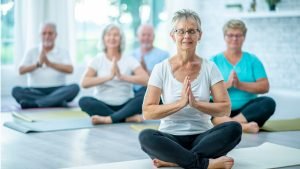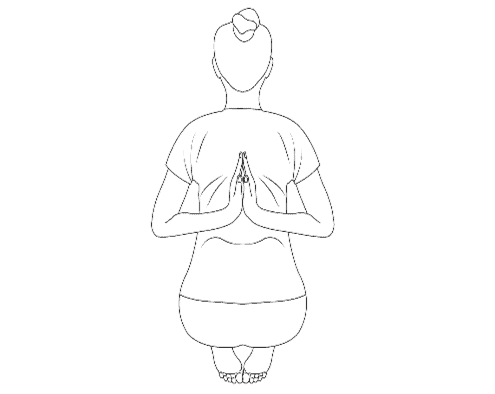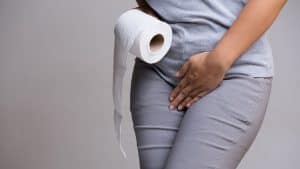Government Aid Resources

As we age, thoughts often turn to how to afford medical care, buy food and pay bills. It will therefore come as a relief that Government Aid is available, namely in four specific categories; Nutrition, Housing, Medical and Employment. We take a look below how the different programmes work and who qualifies.
Food & Nutrition
Keeping a good nutritional diet has a range of health benefits, and the country has a number of government aid programs to help seniors eat well. The food and nutrition programs available between states can vary widely. All aim to make healthy nutritious food more accessible for the elderly population. State specific programs will be advertised by the local Area Agency on Aging.
- Senior Farmers’ Market Nutrition Program (SFMNP) – provides low-income seniors with access to locally grown fruits, vegetables, honey and herbs. State agency contacts can be found here.
- Commodity Supplemental Food Program (CSFP) – works to improve the health of low-income seniors aged 60 and above by supplementing diets with nutritious foods. All fifty states, the District of Columbia, Puerto Rico, and five Indian Tribal Organizations participate in this scheme.
- Nutrition Assistance Program (SNAP) – provides nutrition benefits to supplement the food budget of in-need families to purchase healthy food and move towards self-sufficiency. State specific contacts can be found here.
- Food Distribution Program on Indian Reservations (FDPIR) – provides food to income-eligible households living on Indian reservations and to Native American households residing in designated areas near reservations or in Oklahoma.
- The Emergency Food Assistance Program (TEFAP) – federal aid program that helps supplement the diets of low-income Americans, providing them with emergency food assistance at no cost.
- FNS Disaster Assistance – state, local, and voluntary organizations provide nutrition assistance to those most affected by a disaster or emergency.
Housing
For low income seniors, there is a range of government aid available to help with the cost of mortgages, utilities, taxes and other expenses. Costs that were manageable when working full time can suddenly become overwhelming for retired seniors with a reduced income. Seniors should check with their state agency to identify which programs are available and the specific eligibility criteria.
- Housing Choice Voucher Program – Income assessed criteria. Helps seniors, families and people with disabilities afford housing in the private market.
- Supportive Housing for the Elderly Program – subsidizes independent living-type apartments for seniors that offer services like transportation, cooking and cleaning.
- HUD Information for Senior Citizens – The U.S. Department of Housing and Urban Development resources for seniors on all aspects of housing.
- Eldercare Locator – Provides information to help seniors understand housing choices and make informed decisions.
- Indian Housing’s Office of Native American Programs (ONAP) – Information on safe and affordable housing is available to Native American families.
- Housing Improvement Program – a home repair, renovation, replacement and new housing grant program administered by the Bureau of Indian Affairs (BIA) and federally-recognized Indian tribes for eligible Indians.
- VA Geriatrics and Extended Care – programs helping older veterans with a wide range of housing needs.
- Single Family Housing Repair Loans & Grants – provides income based grants to elderly homeowners to remove health and safety hazards.
- Weatherization Assistance Program (WAP) – Income assessed program led by the U.S. Department of Energy to help reduce energy bills and increase efficiency of insulation, heating and cooling systems.
- Low Income Household Water Assistance Program (LIHWAP) – provides funds to assist low-income households with water and wastewater bills.
Medical & Healthcare
Paying for medical care can put a big strain on finances. The two main government aid programs that assist with medical costs are Medicare and Medicaid, which both cater to seniors. Although similar, there are differences and it’s possible to hold dual health plans with both Medicaid and Medicare. Individual states may also offer aid towards prescription drugs programs. Further information can be found on the state specific aging guides.
- Medicare – The federal health care program for people aged 65 years and above. Consists of three parts Medicare Part A (Hospital Insurance), Medicare Part B (Medical Insurance) and Medicare Part D (prescription drug coverage).
- Medicare Savings Programs – state help to assist with paying Medicare premiums. Medicare Savings Programs may also pay Medicare Part A (Hospital Insurance) and Medicare Part B (Medical Insurance) deductibles, co-insurance, and co-payments if certain criteria are met.
- Medicaid – provides healthcare coverage for low-income adults. It is administered by states, according to federal requirements and jointly funded by states and the federal government.
- VA Health Care – Veteran cover providing regular checkups with primary care providers and specialist appointments (e.g. cardiologists, gynecologists, and mental health providers). Services such as home health and geriatric care, medical equipment, prosthetics, and prescriptions may also be available.
Employment
As retirement age beckons, people find themselves looking for jobs to fit around their lifestyle or hobbies. There are a number of government aid programs to help seniors earn money or learn new skills. Social Security and SSI provide monthly payments for seniors who have met certain criteria.
- American Job Center – Search tool to find workforce services in your neighborhood or across the country.
- Older Worker Program Finder – The U.S. Department of Labor Employment and Training Administration’s Senior Community Service Employment Program (SCSEP) subsidize part-time employment and training in community service positions to enable older workers to move to unsubsidized, private sector jobs.
- Senior Community Service Employment Program (SCSEP) – authorized by the Older Americans Act, the program provides training for low-income, unemployed seniors. A number of criteria are stated including; participants must be at least 55, unemployed, and have a family income of no more than 125% of the federal poverty level.
- Supplemental Security Income (SSI) Benefits – provides monthly payments to people 65 and older or those with disabilities who meet the financial limits. People who have worked long enough may also qualify to receive Social Security benefits as well as SSI.
- AmeriCorps – Volunteer service for Americans aged 55 and older who wish to serve their communities.
- Social Security – provides a source of income when you retire or if you can’t work due to a disability. If you have worked and paid into Social Security, you become eligible for payments at age 62.
- Federal Employees Retirement System (FERS) – a retirement plan that provides benefits from three different sources: a Basic Benefit Plan, Social Security and the Thrift Savings Plan (TSP).
- Credit for the Elderly or the Disabled – Tax credit for lower-income seniors which helps reduce the federal tax owed by eligible seniors. To understand if you qualify, take the short online interview here.
Miscellaneous
Several other government supported programs are available for seniors:
- Lifeline – federal program that lowers the monthly cost of either a phone or internet bill. To be eligible for the program, certain criteria must be met.
- America the Beautiful – National Parks & Federal Recreational Lands Senior Pass – Provides entrance or access to Federal operated recreation sites across the country for seniors aged 62 years and above.
- Home Equity Conversion Mortgage (HECM) – The only reverse mortgage insured by the U.S. Federal Government. This program enables people to withdraw a portion of their home’s equity to supplement their income.
Conclusion
Managing finances can make the golden years stressful, but government aid programs can provide some relief. Programs and eligibility vary between states, so always check what is available in your area. Your local Area Agency on Aging is a great place to start. Contact information can be found in our State Resource Guides.
Read More










